Willcox AVA Soil Maps
Parent Material
Igneous rock is a known parent material occurring in areas throughout the Willcox AVA.1 Limestone appears along the eastern, southern, and southwestern AVA boundaries. Mixed parent material also appears along the southern and southwestern boundaries.
Parent material is the type of bedrock from which soil forms. As a component of vineyard soils, it influences water infiltration, storage, and drainage, erodibility, pH, nutrient availability, and heat absorption, which affect root, canopy, and fruit growth.
willcox-ava-parent-material-web.png
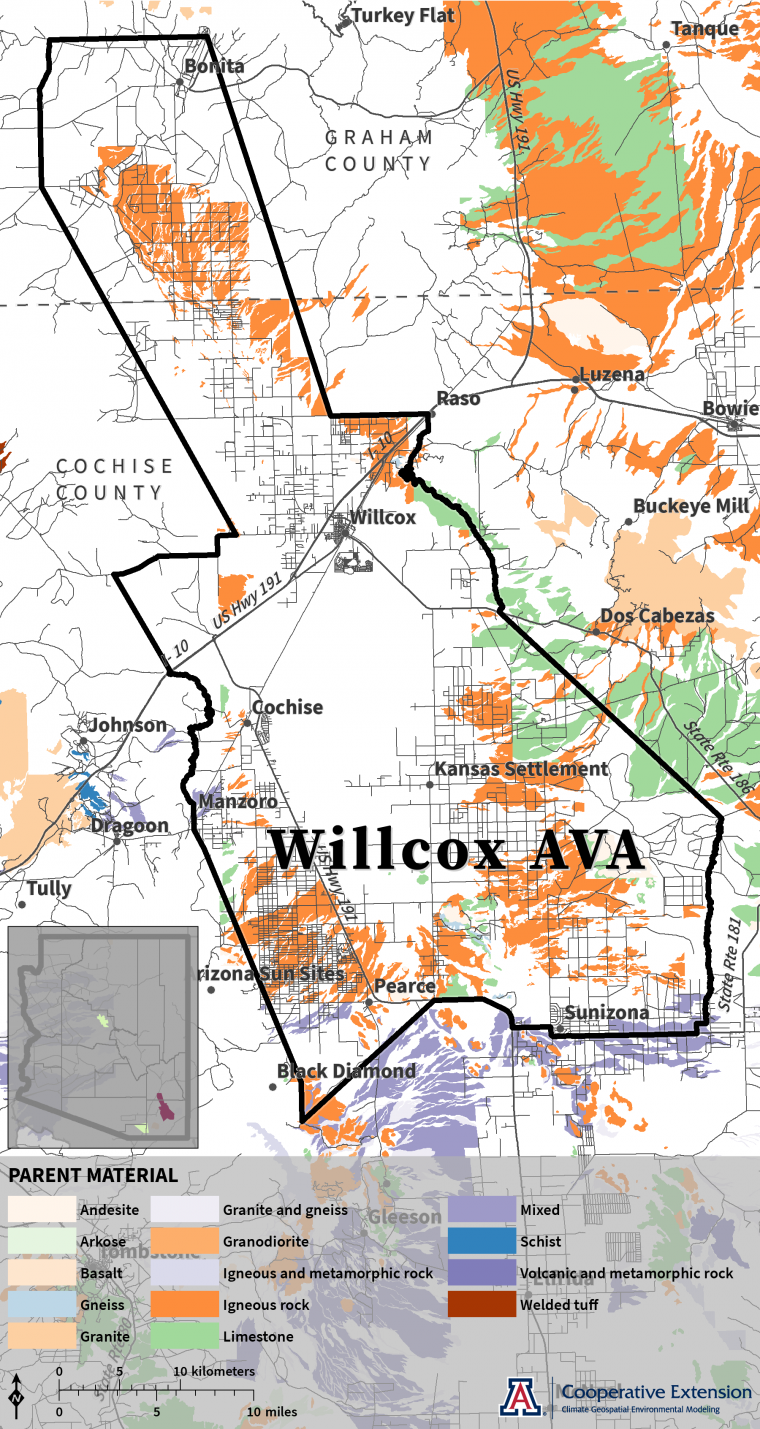
Major Rock Types
Sand and gravel are the most abundant rock types for almost all of the Willcox AVA.2 Dacite, rhyolite, granodiorite, granite, conglomerate, and sandstone occur in isolated areas close to the southern boundary.
Major rock types are the most common solid, loose, and unstratified rocks, defined by composition, texture, and origin. As a component of vineyard soils, they influence water infiltration, storage, and drainage, erodibility, pH, nutrient availability, and heat absorption, which affect root, canopy, and fruit growth.
willcox-ava-major-rock-types-web.png
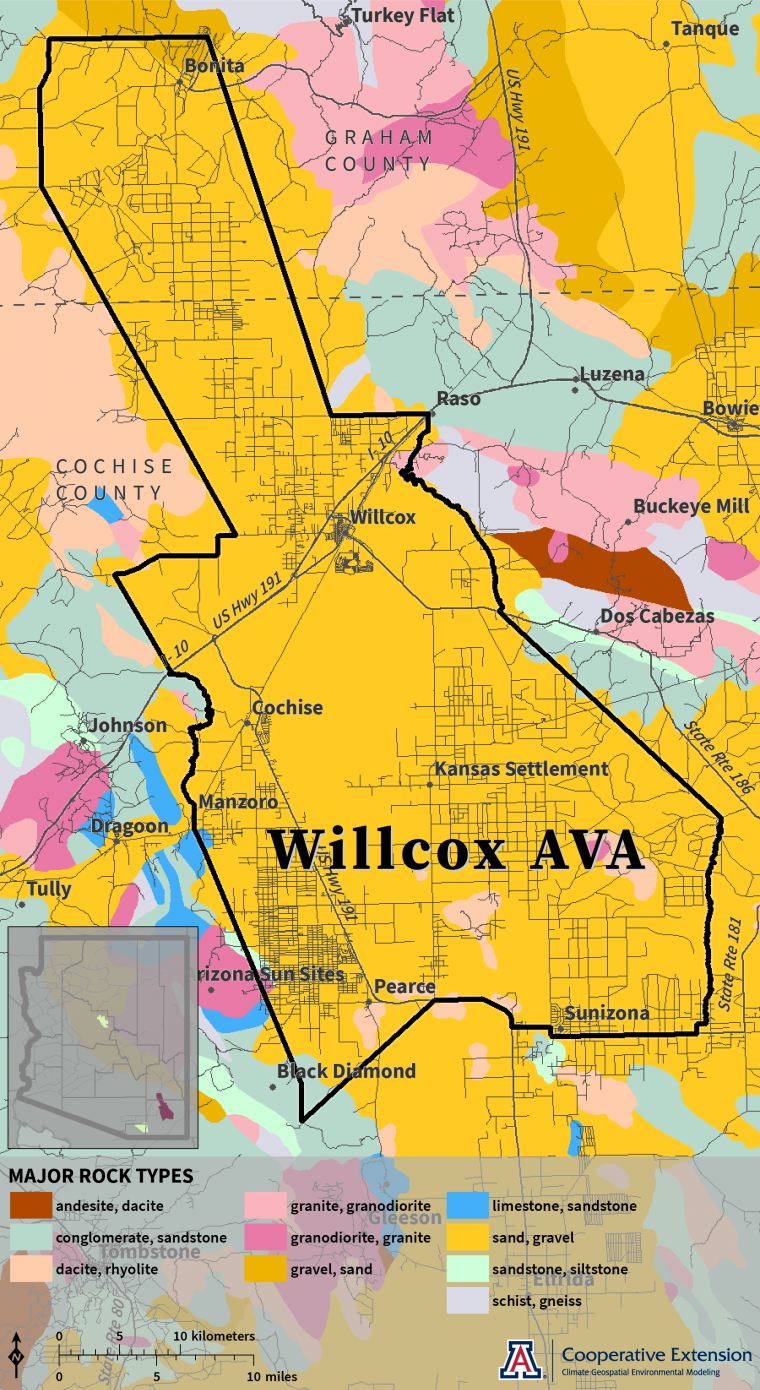
Depth to Bedrock
Known depths to bedrock are less than 12 inches for areas in the central part and along the northern and southern boundaries of the Willcox AVA.1 Depths between 24 and 36 inches exist in the north-central part.
Depth to bedrock represents the distance from the soil surface to the top of a restrictive layer, such as bedrock and other dense layers. As a component of vineyard soils, such restrictive layers can impede water drainage and restrict root depth.
willcox-ava-depth-to-bedrock-web.png
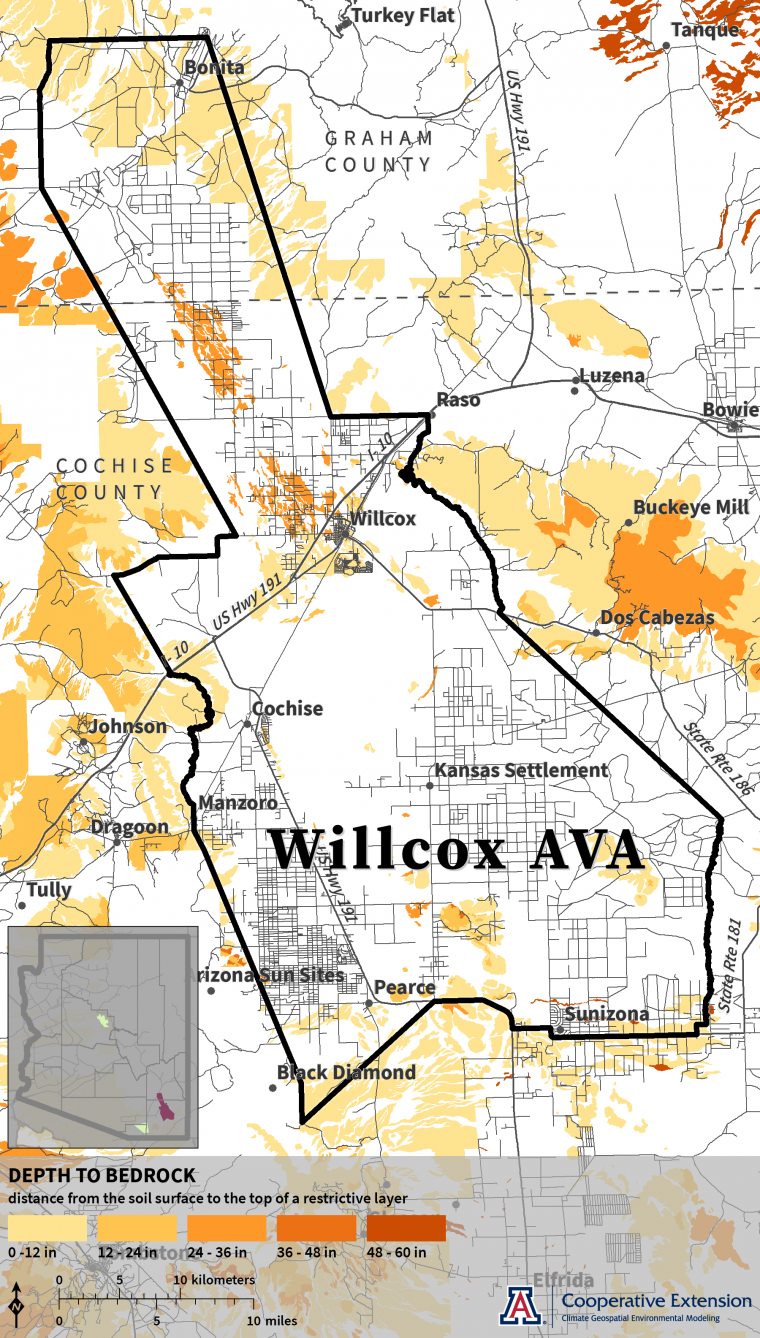
Texture
For much of the Willcox AVA, soil texture is fine sandy loam, loam, sandy clay loam, sandy loam, silt loam, and silty clay loam.1 Areas of sand, coarse sand, loamy sand, and loamy fine sand occur throughout the AVA, as do areas of clay and silty clay along the western and southern boundaries.
Texture represents the relative proportions of mineral grains in soil based on their size. As a component of vineyard soils, it influences water infiltration, storage, and drainage, erodibility, pH, nutrient availability, and heat absorption, which affect root, canopy, and fruit growth.
willcox-ava-soil-texture-web.png
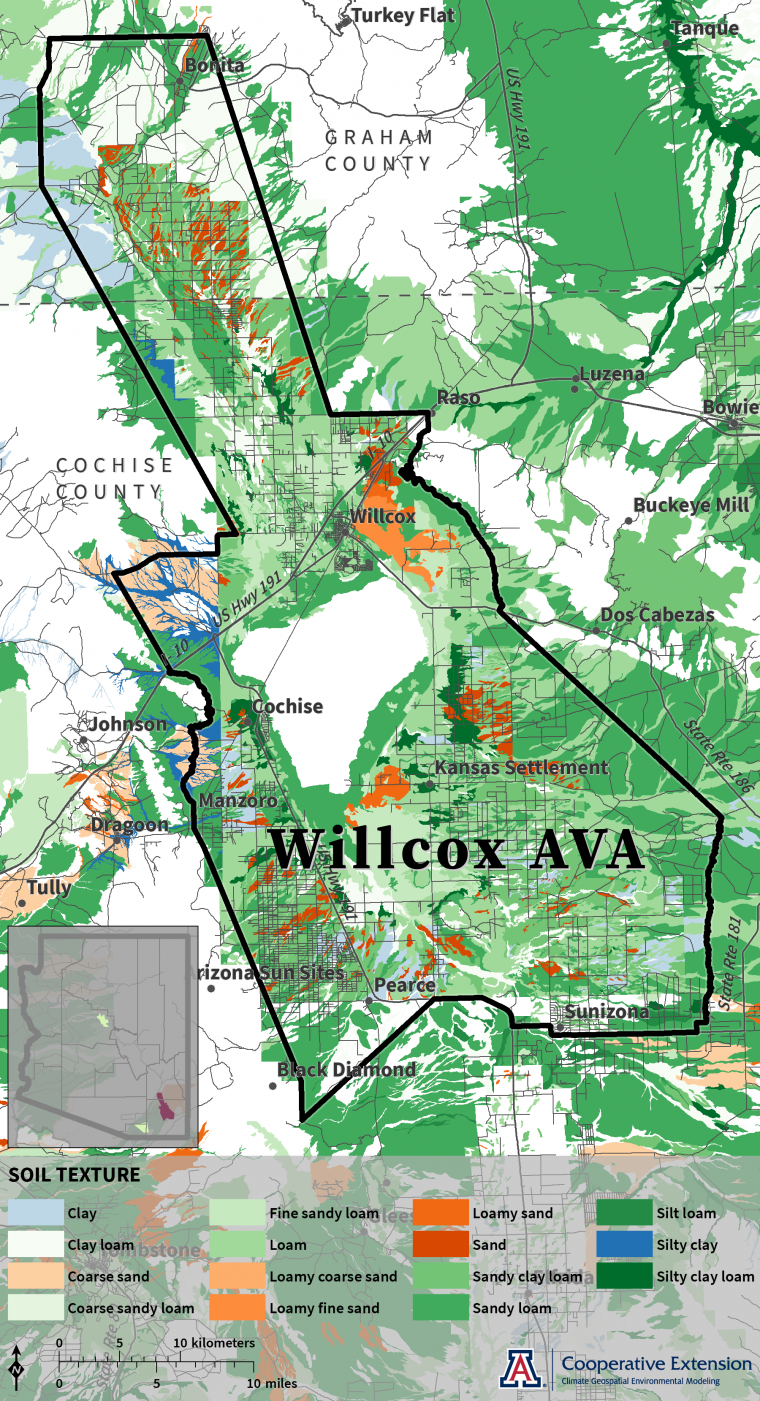
Drainage Class
Much of the Willcox AVA has well-drained soils.1 Excessively, somewhat excessively, moderately well, and somewhat poorly drained soils occur near the Willcox Playa. An area of somewhat poorly and poorly drained soils exists in the southeastern part of the AVA, and an area of somewhat excessively drained soil exists in the northern part.
Drainage class refers to the rate at which water drains from soil, how frequently water occurs in soil, and at which soil layers water is found. As characteristics of vineyard soils, these conditions influence soil moisture and nutrient and oxygen availability, which affect root, canopy, and fruit growth.
willcox-ava-drainage-class-web.png

Available Water Storage
Many areas in the Willcox AVA have available water storage in the top approximately 40 inches of soil greater than four inches.1 Areas with values between three and four inches occur throughout the AVA, and those with values less than three inches exist in the central and extreme south-central parts of the AVA.
Available water storage represents the amount of water soil can store, in this case in the top approximately 40 inches (1 meter), for plants. As a characteristic of vineyard soils, it influences how much rain, melted snow, and irrigation can be absorbed as well as irrigation frequency.
willcox-ava-available-water-storage-web.png
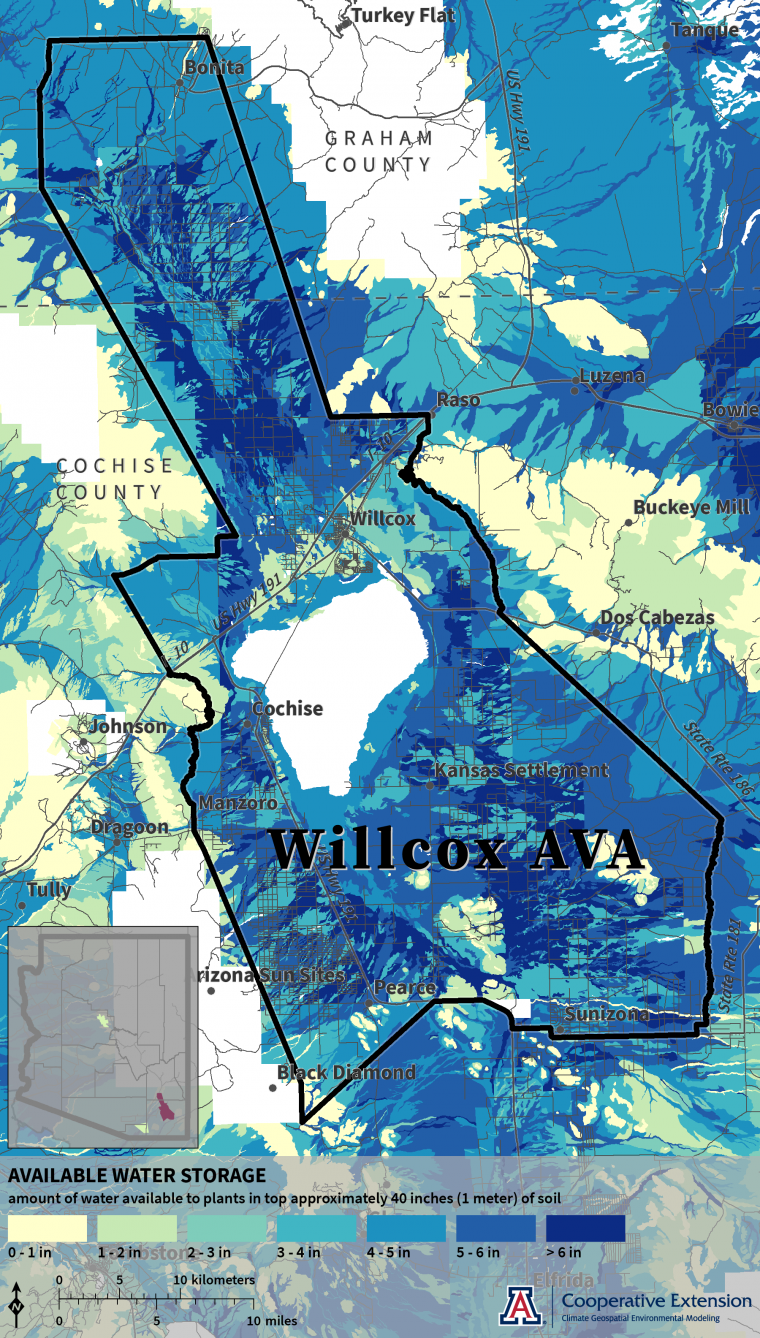
pH
Soil pH is between 8 and 9 across much of the central part of the Willcox AVA, particularly to the north and south of the Willcox Playa.1 Much of the rest of the AVA has soil pH between 7 and 8. Soil pH for some areas along the AVA boundaries are between 6 and 7.
Soil pH reflects the relative acidity (values less than 7) or alkalinity (values greater than 7) of soil. As a component of vineyard soils, it influences nutrient availability, which affects root, canopy, and fruit growth.
willcox-ava-ph-web.png


